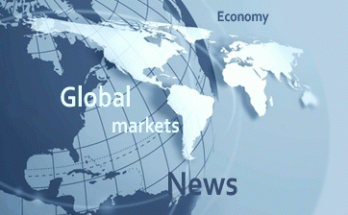
Sometimes there seems to be a single factor of overwhelming influence in the capital market. We have maintained that to the extent one exists, it was divergence as the Federal Reserve is well ahead of the other major central banks in the beginning to normalize policy.  Â
The rise in US interest rates and the related increase in dollar’s exchange value was an integral part of how the global recovery was to strengthen. The below PPP exchange rates in Europe and Japan and the continued pursuit of aggressive, unorthodox monetary policy should help pave the way for stronger recoveries. Â
And indeed that seems to be the case.  The eurozone expanded slightly faster than the US last year, and in Q1 17, it grew nearly as much as the US did an annualized pace (0.5% quarter-over-year vs. 0.7% annualized).  The Japanese economy is also finding better traction.  In addition to valuation considerations, another factor drawing money to European equities this year is that it being behind the US also meant the potential for p/e expansions.  Emerging markets also drew investment, after recent drawdowns, as two threats eased. US bond yields had trended lower, and the Chinese economy appeared to stabilize.
Some observers may be exaggerating the importance of a change in the ECB’s forward guidance.  The ECB has famously kept an easing bias by suggesting that rates could be cut further. However, while true in theory, after all the zero thresholds has been breached, but no one believes it is within the realm of possibilities barring a paradigm shifting shock. Â
In effect, the ECB may drop a phrase of little real value to investors in the first place.  The most likely scenario is still that the Fed hikes and begins to reduce its balance sheet before the ECB stops expanding its balance sheet or brings the deposit rate back to zero from minus 40 bp.  The BOJ’s balance sheet is expanding a bit slower than JPY80 trillion a year, but what is a few trillion yen at this juncture than a rounding error? Â
While the Fed funds futures strip implies a strong chance of a Fed hike in June (Bloomberg says almost 99% chance, the CME says 78.5%) to 1.00%-1.25%, the US two-year note is yielding 1.31%. Â In January and February, when many expected the next hike to be in June, the two-year hovered around 1.20%. Â The yield rose to 1.40% in response to the Fed’s full course press to prepare investors for a March move. At 2.35%, the US 10-year yield is below where it was the Fed hiked at the end of 2016 and again a couple of months ago. Â
After the poor Q1 GDP, the onus is on the US economy to demonstrate that the headwinds were transitory.  That is what we expect to be delivered in the main two economic reports next week: retail sales and CPI.  Consumption was particularly weak in Q1.  The foundation for better consumption that is income and that means wages/salaries and transfer payments, remain intact. Â

